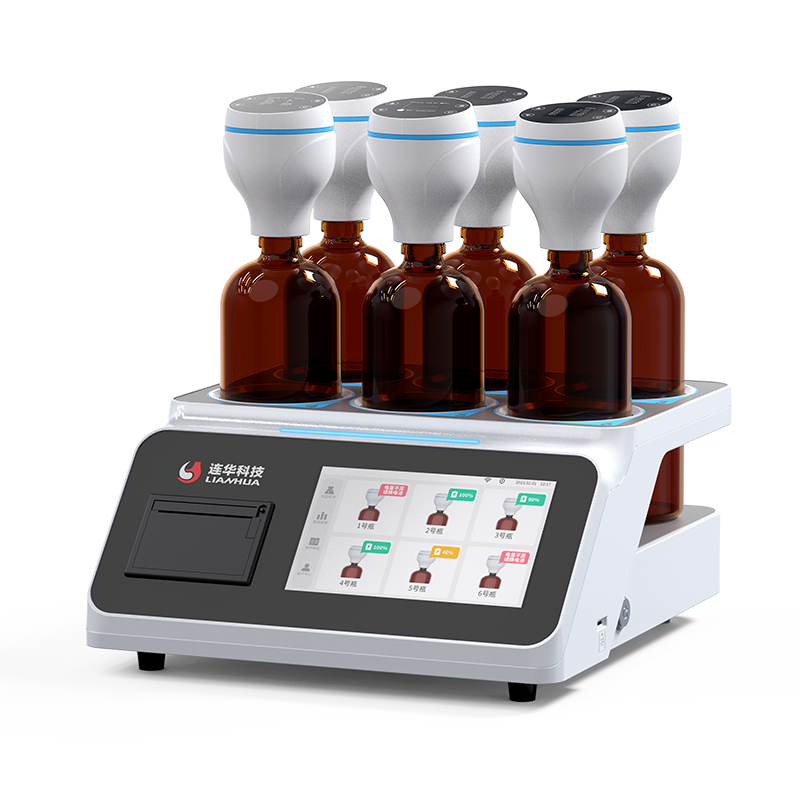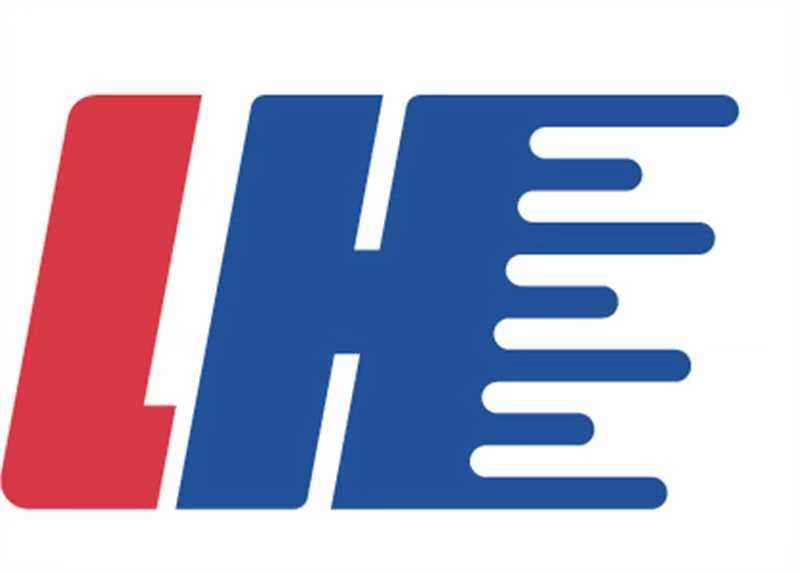מה לחפש במנתח BOD במחיר סביר לתחנות טיהור מים קטנות
הבנת הצרכים המיוחדים של מתקני טיהור מים קטנים בניטור BOD

הגדרת ביקורת חמצן ביולוגית (BOD) ותפקידה בבדיקת איכות שמפם
המונח ביקורת חמצן ביולוגית, או בקיצור BOD, מציין למעשה בכמה חמצן מבוזבז על ידי מיקרואורגניזמים שפורקים חומרים אורגניים במים במהלך חמשת הימים הנחשבים כתקופת בדיקת BOD5, ונמדד במיליגרמים לליטר. כשמדובר באיכות שמפם, המספר הזה חשוב מאוד. ערכים מעל 300 מ"ג/ל מצביעים על זיהום אורגני חמור הדורש טיפול מתאים. מתקנים קטנים חייבים לשמור על ריכוזי BOD בשפכים היוצאים מהם מתחת ל-30 מ"ג/ל כדי לעמוד בכללי הסוכנות להגנת הסביבה (EPA). השגחת התקן הזה מראה שהם אכן מבצעים את מה שאמורים לעשות מבחינת טיפול יעיל בשפכים לפני החזרתם לסביבה.
למה לתחנות טיפול מים קטנות יש דרישות ייחודיות לניטור COD
מתקנים שמעבדים פחות ממיליון גלונים ביום מתמודדים עם אתגרים מיוחדים: תקציבים מוגבלים (35% פועלים עם פחות מ-50,000 דולר לשנה לצורך מכשור), זרימה משתנה עקב אוכלוסייה עונתית, ושטח מעבדה מינימלי. מגבלות אלו דורשות מדגי COD קומפקטיים, נמוכי תחזוקה וכדאיים מבחינת עלות – ובכך להימנע מורכבות והוצאות של מערכות גדולות.
התאמת קיבולת ונפח מדידת COD לגודל התחנה
מדגמי COD אופטימליים למתקנים קטנים תומכים בконפיגורציות מודולריות עם 1–5 תאי דגימה, צריכה של חומרי מתאם תחת 15 מ"ל לדגימה, ונפח יומי של 20–40 דגימות – בהתאם לתפוקת משמרות רגילה. מערכות גדולות מדי, שתוכננו לעיבוד של 100+ דגימות ביום, מגדילות את עלות ההון ב-22% (WaterTech 2023) מבלי לשפר את הדיוק. בחירה נכונה של גודל מבטיחה סטיית מדידה conforme ל-EPA (±7%) תוך מינימום עומס תפעולי.
הערכת איזון עלות-ביצועים במנתחי BOD 저렴ים
איזון בין עלות ראשונית לבין ערך ארוך טווח בהשקעות במנתחי BOD
עבור מתקני טיפול קטנים שבוחנים מנתחי BOD, חשוב להסתכל מעבר למחיר המוטבע עליהם בעת קבלת החלטת רכישה. על פי נתונים עדכניים מסקר משנת 2023 של טכנולוגיית שפכים, אפשרויות זולות יותר במחיר שבין 12,000 ל-18,000 דולר עולות בסופו של דבר כ-23 אחוז יותר מדי שנה לתחזוקה בהשוואה לציוד בינוני שנמכר תמורת 25,000 עד 35,000 דולר. למה? ובכן, החיישנים בדגמים זולים נוטים להתבלות הרבה יותר מהר, ונמשכים רק 6 עד 12 חודשים במקום אורך חיים של 18 עד 24 חודשים שאנו רואים במערכות איכותיות יותר. בנוסף, כיול המכשירים הזולים הללו לוקח כ-40% יותר זמן. מה שחשוב באמת למנהלי מפעלים הוא למצוא מכשירים שבהם העלות הכוללת נשארת בטווח של כ-15% שונות על פני חמש שנות פעולה, וכל זאת תוך עמידה בתקני הדיוק המחמירים של ה-EPA שדורשים גופי הרגולציה.
השוואה בין שיטות מסורתיות לשיטות להערכת BOD מהירה מבחינת הרווחים ביעילות
מפעננים מודרניים מקטינים את התלות בשיטת ה-BOD בת 5 ימים באמצעות אלטרנטיבות מהירות:
| מטרי | BOD מסורתי | ניתוח מהיר |
|---|---|---|
| זמן ניתוח | 5–7 ימים | 8–24 שעות |
| צריכה לכל בדיקה | $3.50–$4.20 | $1.90–$2.60 |
| השתתפות טכנאי | 45 דקות | <15 דקות |
מערכות רספירומטריות ואופטיות אוטומטיות מקטינות את העבודה הידנית ב-67%, ומספקות נתונים מוקדמים תוך יום אחד — אידיאלי למוסדות המטפלים בפחות מ-50 דוגמאות בשבוע.
מקרה לדוגמה: חיסכון בעלויות עקב מעבר לאנליזר COD בדרגה בינונית במתקן טיפול כפרי
מתקן נברסקה המשרת 8,000 תושבים הפחית את עלויות הניטור השנתיות ב-31% לאחר שדרוג לאנליזר בשווי 28,000 דולר, שמלווה בחיישני אופטיקה עצמאיים (אחריות של 3 שנים), דיווח מבוסס ענן, ותאום של 94% ל-BOD — בבדיקות אימות משנת 2022. המערכת ביטלה הוצאות של 11,200 דולר על שירותי מעבדה צד ג', וקיצצה את עלויות סילוק פסולת כימיקלית ב-40%.
פרדוקס התעשייה: כשאנליזרים זולים יותר למדידת COD מגדילים את עלויות הפעלה לאורך זמן
האנליזטורים הזולים יותר שמחירם כ-15,000 עד 20,000 דולר דורשים לרוב שדרוג חומרה לאחר כשנה וחצי. לפי סטטיסטיקות תחזוקה מסוימות של WEF משנת 2023, כמעט 6 מתוך 10 מתקנים נאלצים לעשות זאת רק כדי לשמור על עמידה בדרישות. כאשר חיישנים אינם מאומתים כראוי, יש נטייה לסטיה במדידות שלהם כשמדובר בתנאי עומס שונים. זה גורם לכ-22% בדיקות חוזרות מיותרות. וכאן הדברים הופכים יקרים יותר עבור פעולות קטנות. כל פעם שיש עלייה של 10% בדוגמאות פגומות, זה עולה בין 4,200 ל-6,100 דולר נוספים מדי שנה בקנסות. עלויות אלו מצטברות במהירות ואיש לא באמת רואה אותן מגיעות עד שהפער משפיע על הרווחיות.
הערכת דיוק, אמינות ושיטות מדידה
טכנולוגיות חיישן גרביטרי, רספירומטרי ואופטי באנליזטורים זולים של COD
מתקני עיבוד שפכים קטנים המחפשים אפשרויות זולות לבדיקת COD מסתמכים בדרך כלל על שלוש גישות עיקריות: מדידות מבוססות משקל, מעקב אחר חמצן לאורך זמן או טכניקות זיהוי אופטי. שיטת המשקל עובדת על ידי סינון דגימות ואז ייבוש שלהן כדי לחשב את כמות החומר האורגני הנוכחית. ניטור חמצן לוקח יותר זמן מכיוון שהוא צריך לצפות בכמות החמצן שנצרכת במהלך תקופה של חמישה ימים. חיישנים אופטיים מציעים משהו שונה - הם מודדים רמות פלואורסצנציה או דפוסי ספיגת אור, מה שנותן תשובות מהירות יותר. רבים מהמפעלים הקטנים מוצאים שהמערכות האופטיות מציעות שיפור של כ-60 אחוז במהירות בהשוואה לשיטות ישנות יותר, אם כי זה יכול להשתנות בהתאם לתנאים מסוימים. מה שחשוב הוא שעומם על כך שהם מהירים יותר, הם עדיין עומדים בכל הדרישות הרגולטוריות הנדרשות לשליטה באיכות המים.
השוואת ביצועים של שיטות מדידת COD בתנאים מציאותיים
הביצועים בתנאי שדה אמיתיים יכולים להיות שונים מאוד. קחו למשל מנותח נשימה, שברוב המקרים מגיע לדיוק של כ-5% בסביבות מעבדה מבוקרות, אך נאבק עם סטייה של כ-15% כאשר הטמפרטורות יוצאות ממגוון האידיאלי. חיישני אופטיקה גם כן נתקלים בבעיות, ומציגים סטיות בין 12% ל-18% כשיש פריחת אצות, מאחר והקלורופיל מפריע לקריאות. לפי מחקר שפורסם על ידי NIST בשנה שעברה, חיישנים זולים נוטים להסיט בין 15% ל-22% כשעוסקים ברמות משנה משתנות. זה אומר שיצרנים צריכים לבנות תיכוניים טובים יותר ולהקים פרוטוקולי כיול מוצקים אם הם רוצים להשיג תוצאות אמינות בשטח, שם התנאים אינם צפויים.
שמירה על אמינות באמצעות כיול והתאמה לפרוטוקולי בדיקת BOD סטנדרטיים
דיוק עקבי תלוי בכיוון רבעוני באמצעות חומרים ייחוס מאושרים על פי ISO. מתקנים שמגישים פרוטוקולים לכיול הנדסיים מונעים סטטיסטית הפחתת נסיגת מדידה ב-40% במהלך 12 חודשים. התאמה לתקנים SM 5210B ו-EPA 405.1 ממזערת שגיאות, ומערכות אוטומטיות מפחיתות סטיות מפרוטוקול ב-78% לעומת תהליכים ידניים.
הארת נתונים
| שיטה | שונות ממוצעת | תדירות איזון | מקרה שימוש אידיאלי |
|---|---|---|---|
| רספירומטרי | ±8% | רבעון | דיווח רגולטורי |
| חיישן אופטי | ±12% | חודשי | ניטור תהליך מהיר |
| גרביטרי | ±6% | דו-שנתי | ריכוז שלג |
בחירת השיטה הנכונה צריכה להיות עקבייה עם עדיפויות התחנה – התאמה לדרישות, מהירות או יעילות תפעולית – תוך שמירה על שגיאה פחות מ-10% בפועל.
קלות שימוש, תחזוקה ותמיכה עבור מתקנים עם משאבים מוגבלים
מאפייני עיצוב המשפרים את קלות השימוש ומקטינים את דרישות התחזוקa
מ grievי BOD ידידותיים למשתמש מצטיינים בממשקים אינטואיטיביים, תאי דגימה ניתנים להטענה מקדימה והנחיות בצבעים שמצמצמים טעויות של המפעיל ב-40% (כתב העת WaterTech, 2023). כיסויים עמידים במזג אוויר וקווי דגימה עמידים בסתימות מקטינים עוד יותר את תדירות התחזוקה בחצי, במיוחד חשוב בסביבות לא מבוקרות הנפוצות במתקנים כפריים.
הפחתת עומס על הטכנאים באמצעות טיפול אוטומטי בדגימות ומערכות צלחה עצמית
מפענחים עם משאבות פריסטלטיות מובנות ומחזורי ניקוי ב-UV מבצעים אימות עצמי לאחר כל בדיקה, מה שמאפשר ניטור עקבי בהתאם לתקנות ה-EPA גם כשיש צו מצומצם. האוטומציה מקטינה העברות ידניות של דוגמיות ב-90% תוך שמירה על דיוק של ±5% לעומת שיטות ידניות.
זמינות של טכנאים מקומיים, חלקי חילוף ועדכוני תוכנה
סקר משנת 2022 של 150 מוסדות קטנות גילה כי 63% מהם חוו עיכובים בביצוע תיקונים למשך יותר משני שבועות עקב רשתות שירות מרוחקות. ספקים המציעים משלוחי חלקי חילוף ביום ההגעה ועדכוני תוכנה דרך האוויר מקטינים את זמן העצירה ב-72% בהשוואה לאלה התלווים על מסירת קוד ברמה פיזית.
תנאי האחריות והצעות הדרכה כמדדי מחויבות הספק
יצרנים מובילים מציעים כעת אחריות של 3 שנים על כל הגוף, הכוללת חיישנים ומערכות ניוזל, המגיעה מעבר להttep של 12 חודשים שהציעו ספקים קלאסיים. הדרכה באמצעות מציאות מדומה בשילוב עם תמיכה בפתרון תקלות בזמן אמת משפרת את אחוז ההצלחה של התיקון הראשוני ב-58% עבור מפעילים חדשים בתחום המכשירים.
הכנה לעתיד עם טכנולוגיית שיקוף COD ניתנת להרחבה וחכמה
שילוב חיישני COD עם גישה לנתונים מרחוק ליישומים תעשייתיים ועירוניים
חיישני COD מחוברים לענן מאפשרים עקיבה מרחוק ברשתות מבוזרות. A מחקר ניהול שפכים 2024 מצא שמערכות מסוג זה מפחיתות טעויות דיווח ב-40% באמצעות ניטור מתמיד בזמן אמת, מה שמועיל במיוחד למפעילים עירוניים הנשאים באחריות על מספר מתקנים קטנים.
אמצה של מערכות מופעלות IoT תואמות עם שילוב SCADA
מפעלי אנליזה מושתפים-אינטרנט (IoT) מתמזגים ישירות עם פלטפורמות בקרת שיפוט ואיסוף נתונים (SCADA), ובכך מונעים מחסומי מידע. מבחני השדה של NIST משנת 2023 הראו שהיחידות הללו שומרות על סטיית מדידה של פחות מ-5% במהלך עומסי הידראוליקה מרביים, בהשוואה להתקנים עצמאיים, שהציגו שונות של 15–22% באותם תנאים.
ניתוח מגמות: המעבר לתחזוקה חיזויית ולתחזית מגמות COD בהדרכת בינה מלאכותית
מתקנים מתקדמים משתמשים כיום באלגוריתמי למידת מכונה יחד עם נתוני COD כדי לחזות עלותיות בצורך בחמצן עד 72 שעות מראש. יישומי מוקדמים מדווחים על 38% פחות תיקונים דחופים באמצעות מודלים של תחזוקה חיזויית, לפי מדדי יעילות תעשייתיים . המעבר הזה הופך את הניטור לניהול פרואקטיבי, ותומך בהתאמה לתקנות חמות יותר של הסוכנות להגנת הסביבה (EPA).

